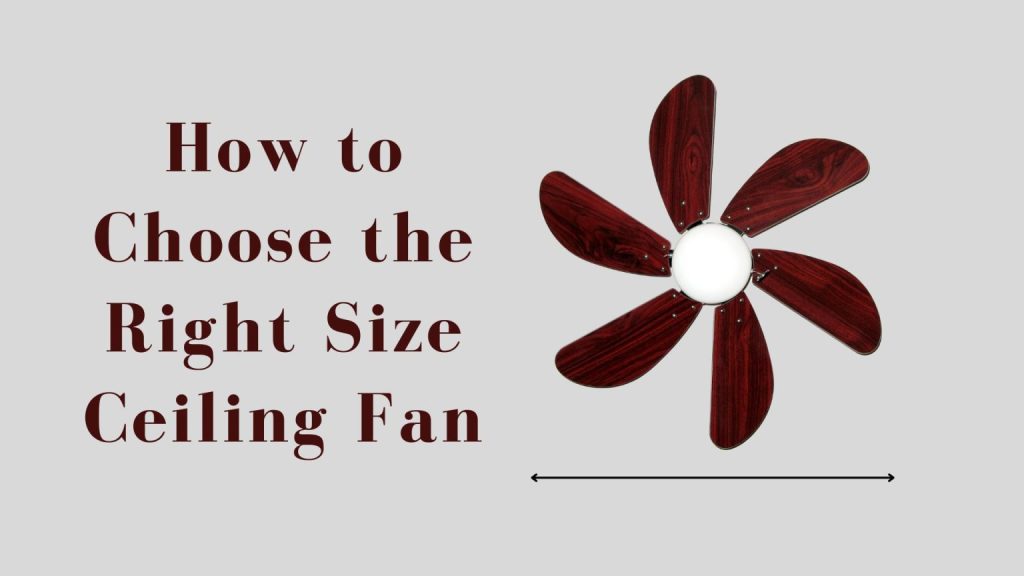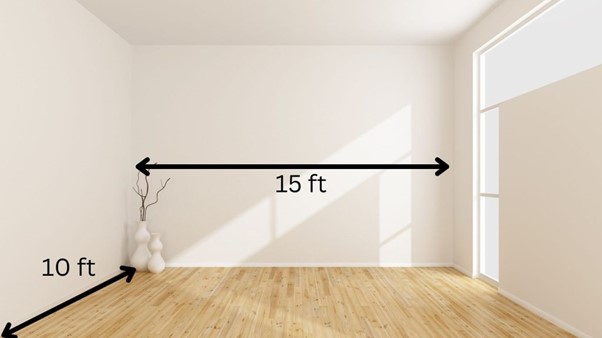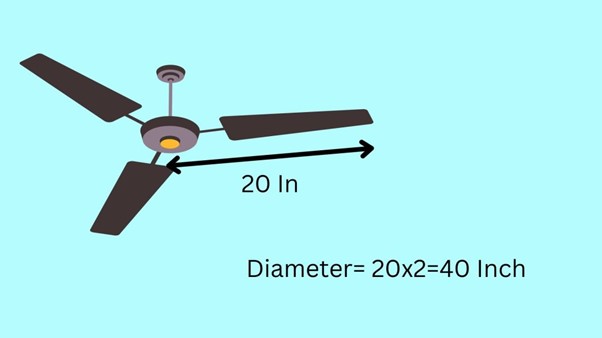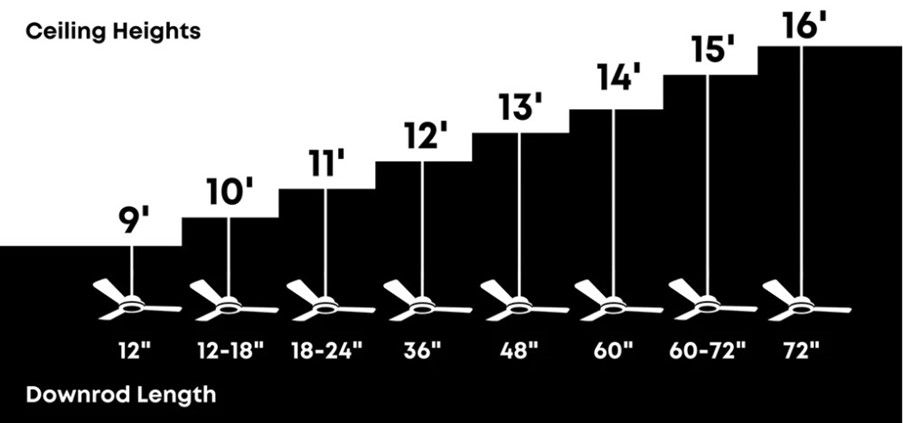
Selecting the proper ceiling fan size is like to locating the ideal foot length when shopping for shoes. You want maximum convenience without sacrificing good taste or your money account.
We can’t just walk around town trying on different ceiling fans until we locate the right one. This helpful sizing chart was made to aid in the process of determining what size ceiling fan would be best for your home.
Also Read: Most Expensive Ceiling Fans
Calculating the Area of the Room

The most powerful fan in the world won’t be able to cool a space that’s too big for it. If you want to choose the right ceiling fan for your room, you’ll need to know how big it is. It’s easy to figure out how much space you have in a certain room. Simple tools like a ruler and paper are all that’s required.
To begin, clear the area of any furniture or decorative items that might obstruct your measurements.
Second, with the tip of the tape measure against the wall, measure the distance. Be sure it stays put in relation to the wall.
Thirdly, Proceed to the opposite end of the wall with the measuring tape in hand.
Number four: write down your foot size.
Also Read: Best High CFM Ceiling Fans
Repeat this procedure to get the distance between two walls.
The square footage may be determined by multiplying the length and width dimensions together.
If you have a room that isn’t a perfect square or rectangle, divide it in half. You could make a square and a rectangle out of a room that’s L-shaped. After determining the square footage of each component separately as described above, combine the results to get the total square footage of the room.
Calculating the Diameter of a Ceiling Fan

Following the determination of floor area, the next step is to gauge the size of the required fan. Fans come in a variety of sizes, and the dimensions are often listed in inches on the packaging. Diameter, or the space between the tips of two adjacent blades, is what this unit of measurement quantifies. If you want to minimize blade collisions and ensure proper air dispersion, knowing how to measure your ceiling fan’s blade spread is crucial.
Also Read: Best Enclosed Ceiling Fans
This can be measured simply by yourself:
Calculating the blade sweep for a fan with an odd number of blades is slightly different than for even-numbered blades. The radius, which is the distance from the blade’s tip to the center of the ceiling fan’s motor hub, is the first quantity to determine. Next, multiply that number by 2 to get the diameter.
Measure the distance from one end of a ceiling fan blade to the other to determine the blade sweep if the number of blades on the fan is equal.
How High Is The Ceiling?
You should measure the height of your ceiling before deciding on a mounting method. A ceiling fan with a downrod mount is ideal for mounting on taller, sloping surfaces. Smafan offers a wide variety of ceiling fans with a direct flush mount that are ideal for rooms with low ceilings.
Using a stepladder and a measuring tape, you can easily find out how high your ceilings are from ground level.
Also Read: Best Garage Ceiling Fans
Recommended Length of Downrod

The recommended downrod length is calculated by subtracting the ceiling height from the combined fan and desired hanging height.
The recommended downrod length is calculated as follows:
Also Read: What is the Blue Wire for in a Ceiling Fan
Selecting a Fan
Knowing the room’s dimensions, the desired ceiling fan size, and the ceiling height can help you settle on the perfect fan.
Ceiling fans with a diameter of 36″ to 48″ are ideal for smaller areas (75 ft2 to 144 ft2)
Medium: 50″ to 52″ ceiling fans are ideal for rooms with an area of 145 to 300 square feet.
For spaces 300 square feet or more in size, we advise a ceiling fan with a blade span of 56″ to 60.”
When choosing the mounting method or downrod length, keep in mind the height of your ceiling. In our blog post, “Ceiling Fan Size and Installation Tips,” we go into greater detail about how to choose the ideal ceiling fan size for your space.
Other Features to look
Now that you know the fundamentals of ceiling fan sizing, here are some further considerations:
Also Read: How to Choose an Outdoor Ceiling Fan
Size of Light Set –
Candelabras with incandescent lamps are now obsolete. LED light kits, which are now standard on most new ceiling fans, last a long time and can be easily changed out for different effects. They are protected by a lampshade that is linked to the motor hub of the fan. When deciding on a downrod and a location for your ceiling fan, remember to factor in the height of the light kit.
Tilt of the Ceiling –
Be sure the ceiling fan you buy can accommodate the slant of your ceiling. Many ceiling fan designs, particularly flush-mount variants, can only be used in rooms with perfectly flat ceilings. When the ceiling slopes past a certain degree, even downrod-mounted fans need an inclined mounting kit. The downrod-mounted Smafan fans may be installed on slanted ceilings up to 27 degrees. Verify the ceiling’s slope is compatible with the fan’s specifications for a trouble-free installation and years of reliable service.
Disruptions in the Ceiling –
Watch out for the roadblocks! If there are any light fixtures, decorations, or other structures in the way of your ceiling fan’s blades, you should move them before installing your fan. Adjusting the downrod’s length may be necessary if the fan’s blades are going to be obstructed by a wall or other fixture.
Also Read: Flush Mount vs Downrod Ceiling Fan
Adequate Support for Body Weight –
You should check that the ceiling and fan bracing can handle the load of your fan. The recommended maximum load is often listed on the box or the side of the ceiling fan bracing. In case of doubt, it’s advisable to choose a ceiling brace that has a junction box and load bearing capability appropriate for ceiling fans.
About The Author
